With Bayer Leverkusen under Peter Bosz and Werder Bremen under Florian Kohfeldt, two proactive Bundesliga sides battled each other on the ninth Bundesliga 2019/20 match-day.
In the following tactical analysis, we are going to explain how Werder Bremen could gain a point with their centrally focused 4-3-2-1 tactics. Moreover, we will outline Leverkusen’s reliance on possession and how this affected this game.
Lineups and formations
Bayer Leverkusen coach Peter Bosz set his side up in a 3-4-1-2 formation and therewith lined up an attacking duo instead of a box midfield that he preferred before.
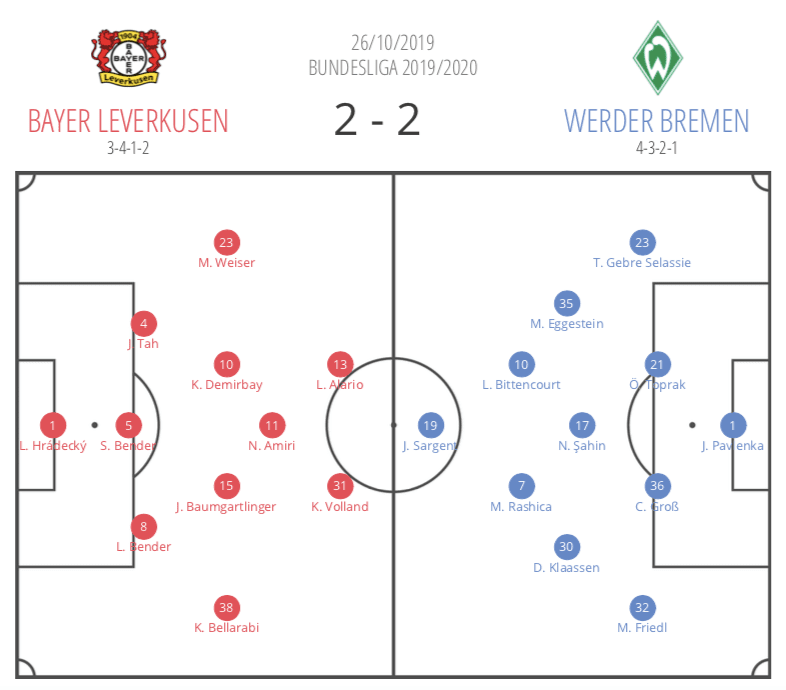
Behind Leverkusen’s attacking duo, consisting of Kevin Volland and Lucas Alario, Nadiem Amiri connected midfield and attack in a playmaker-position. Usual right-back Mitchell Weiser switched sides to the left while Karim Bellarabi took over the role of the right wing-back. The latter one was supposed to utilise his dribbling abilities in 1v1 situations on the flank. That caused a slightly asymmetrical shape with Bellarabi being positioned very high on the pitch.
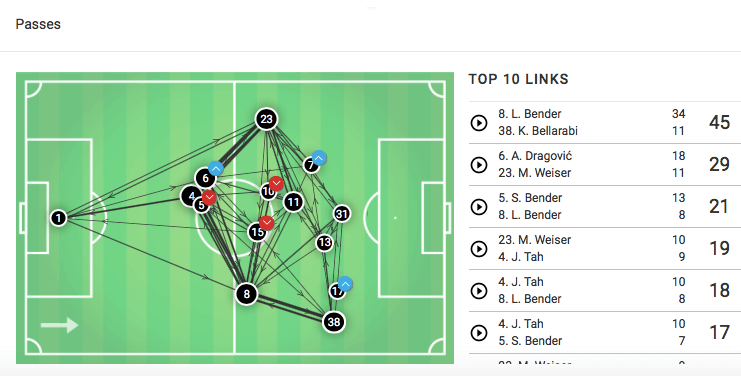
Werder Bremen, on the other hand, used a 4-3-2-1 formation. Their main emphasis laid on shutting down central areas during Bayer Leverkusen’s possession phase.
In Josh Sargent, Kohfeldt lined up an attacker who is able to both, utilise his pace to threaten the space behind the defence as well as to keep the ball and wait for his teammates to move up the pitch. Behind this, Werder played with two fast and skilful attackers in Milot Rashica and Leonardo Bittencourt in narrow positions. And in front of their back-four which was led by centre-back Ömer Toprak returning from injury, Werder played with a midfield three to protect the defensive line as well as to press Leverkusen’s wing-backs in wide areas.
Leverkusen’s urge to possess the ball
In general, ball possession stats are not directly related to the result of a game. Bayer Leverkusen, however, are one of the sides that benefit from being in possession of the ball. As one can see below, Leverkusen conceded their goals (green) during the stages of the game where they enjoyed less possession.
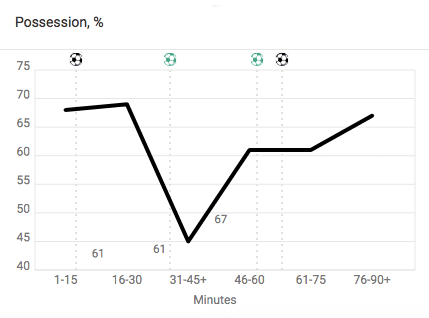
Bosz’s side started very well into the game as they often switched sides and therewith utilised the free space on the far side which was created due to Bremen’s narrow defending shape. In order to switch sides, Leverkusen’s double pivot occasionally shifted towards the ball side simultaneously.
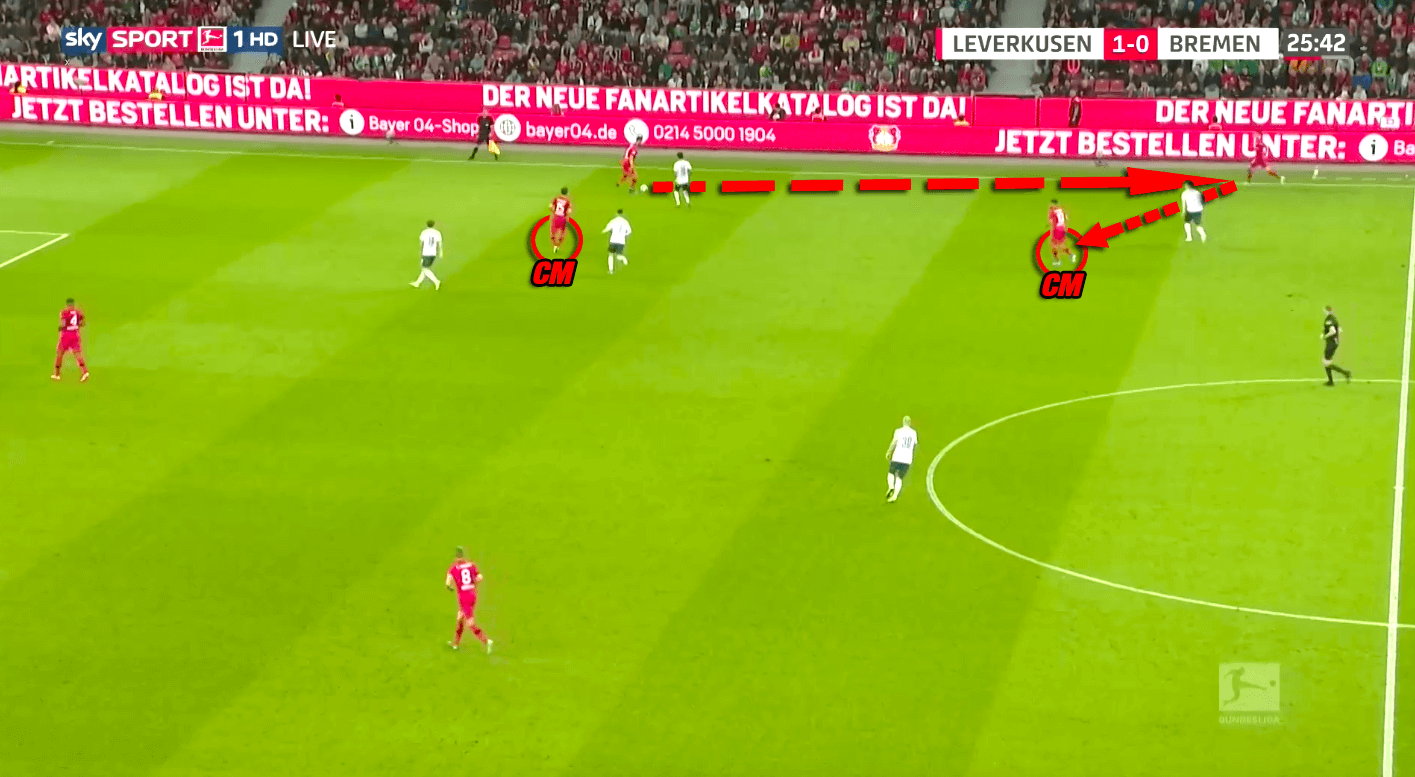
In these situations, both central midfielders used a vertical staggering to outplay Werder’s press.
As the game wore on though, Leverkusen failed to stick to their patience in possession and often lost the ball too early. Especially when losing the ball after only a few passes, the home-side allowed Werder to counter-attack with their players in favourable positions while they were often dragged apart once Leverkusen had switched sides in their possession phase before.
Werder’s 4-3-2-1 press
Werder Bremen’s PPDA (Passes allowed per defensive action) of 12.79 indicates that they were not interested in pressing Bayer Leverkusen from the front. Instead, Kohfeldt wanted his side to prevent Leverkusen’s midfield pivot from pulling the strings in build-up.
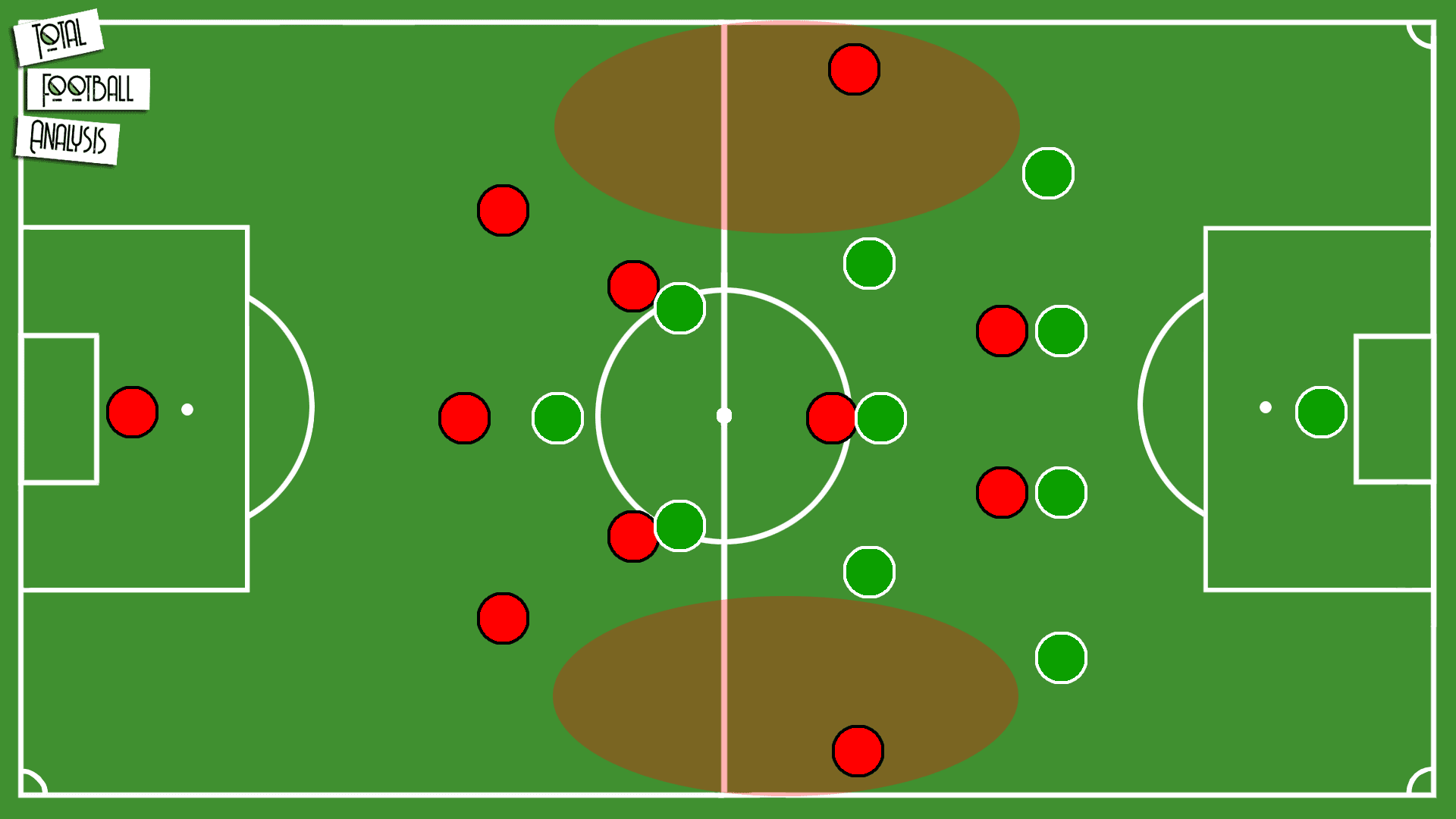
Therefore, the narrow duo behind their attacker, consisting of Rashica and Bittencourt, marked Leverkusen’s double pivot. Behind that, Nuri Sahin covered the central are in front of Werder’s backline, while the wide men of Bremen’s midfield three moved out on the ball side to press Leverkusen’s wing-backs.
With this narrow formation, Werder obviously offered space on the wings. Whenever Leverkusen attacked down the side where they initially started their attack, Bremen’s wide midfielders could support the full-backs to defend Leverkusen’s wing-backs. Once Bosz’s side successfully switched sides though, the distances for Bremen’s midfield three often became too far and Leverkusen were offered more space.
Leverkusen’s wide attacks
Leverkusen’s main attacking intent was to get their right wing-back Bellarabi into 1v1 situations against Werder’s left-back. Bellarabi was then supposed to utilise his take-on abilities to get into good positions to put in crosses. As can be seen below, Leverkusen put in a total of 45 crosses, with 20 of them coming from Bellarabi.
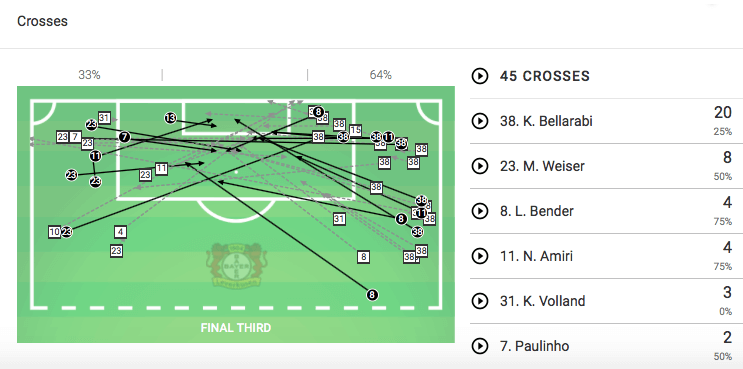
To do that, Leverkusen often started their initial attack on the left side in order to switch play to the right. Right central defender Lars Bender could mostly progress the ball up the pitch after Leverkusen’s switch of play.
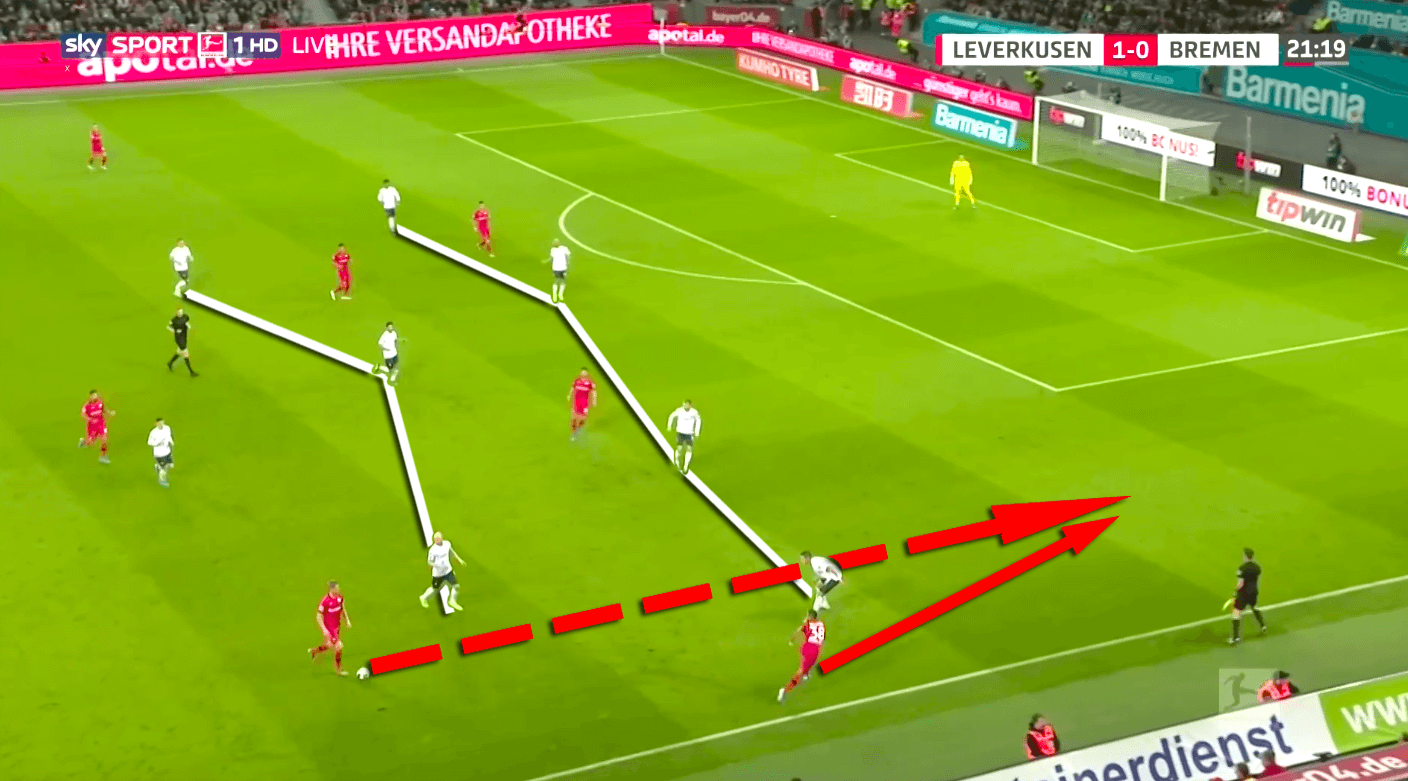
That was because Werder’s left midfielder Davy Klaassen had to shift a long way in order to press Bender. This enabled Bellarabi to receive the ball in higher areas. From these situations, Leverkusen often reached the final third. Even though Bremen could defend these attacks sooner or later, they only cleared the ball causing corner-kicks multiple times within the first half. As a result, Leverkusen could score the leading goal from a corner-kick.
In the second half, Bosz’s side scored their second goal of the game after a low-ground ball coming from Bellarabi. The wing-back utilised a 1v1 situation against Werder left-back Marco Friedl to get towards the end-line before.
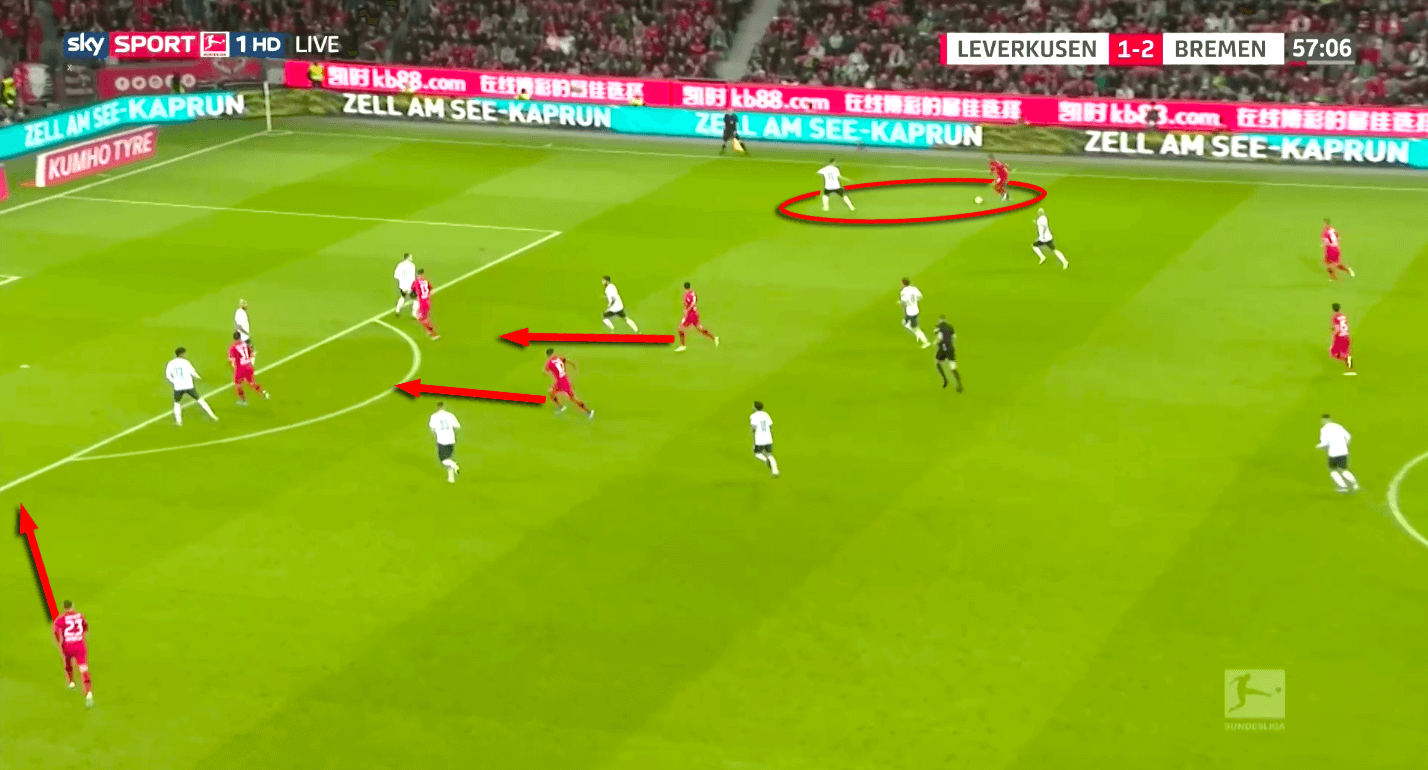
Within the penalty area, Bremen failed to deal with Leverkusen flooding the box with attackers.
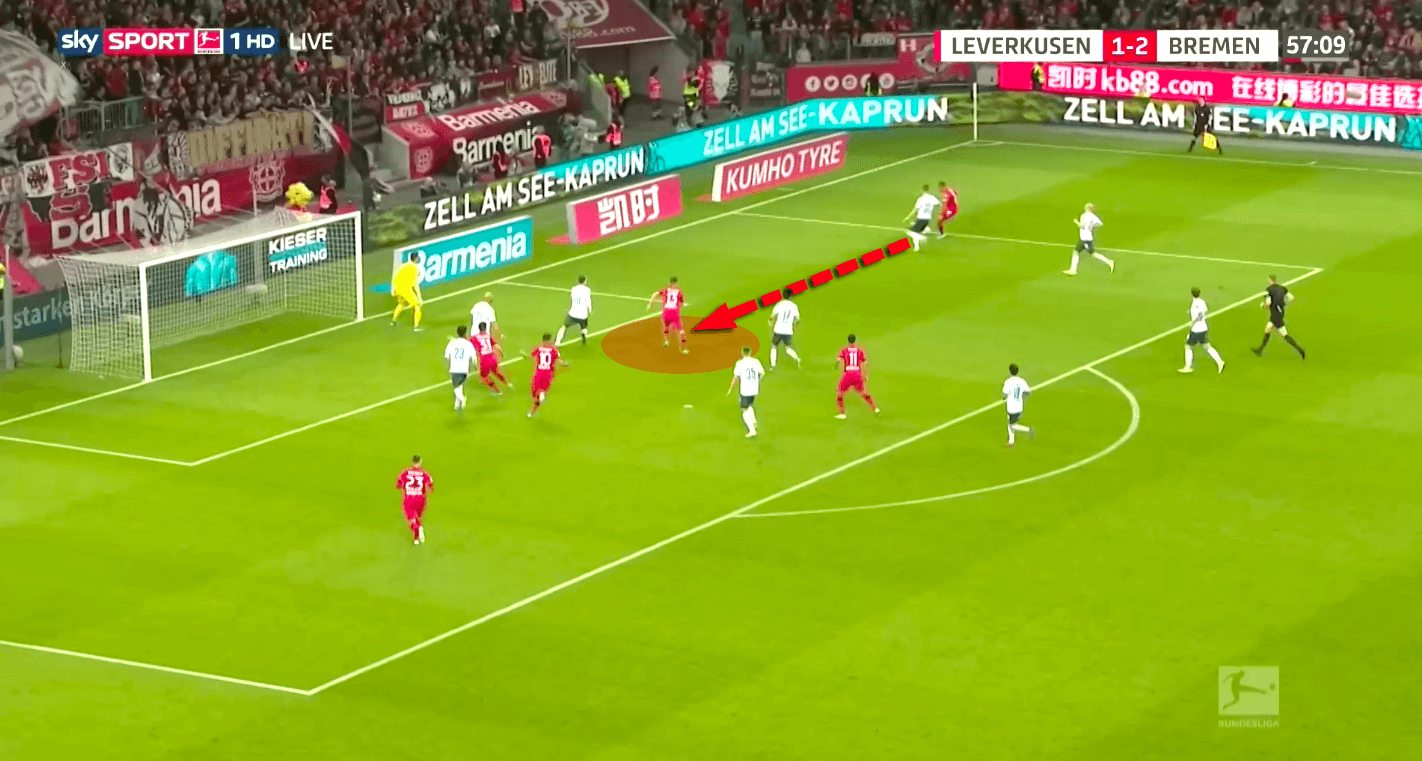
Werder’s mix of counter-attacks and purposeful positional attacks
As Leverkusen are known for their issues during defensive transition, Werder obviously wanted to exploit this with counter-attacks. Nevertheless, Kohfeldt also wanted his side to retain possession when Leverkusen were organised defensively in order to avoid giving the ball away too early.
For most parts of the match, Werder Bremen’s strategy worked out well. Kohfeldt’s side were capable of counter-attacking with their attacking trio and therewith create numerical equality against Leverkusen’s back three. Using their advantage in pace, Bremen tried to get behind the backline.
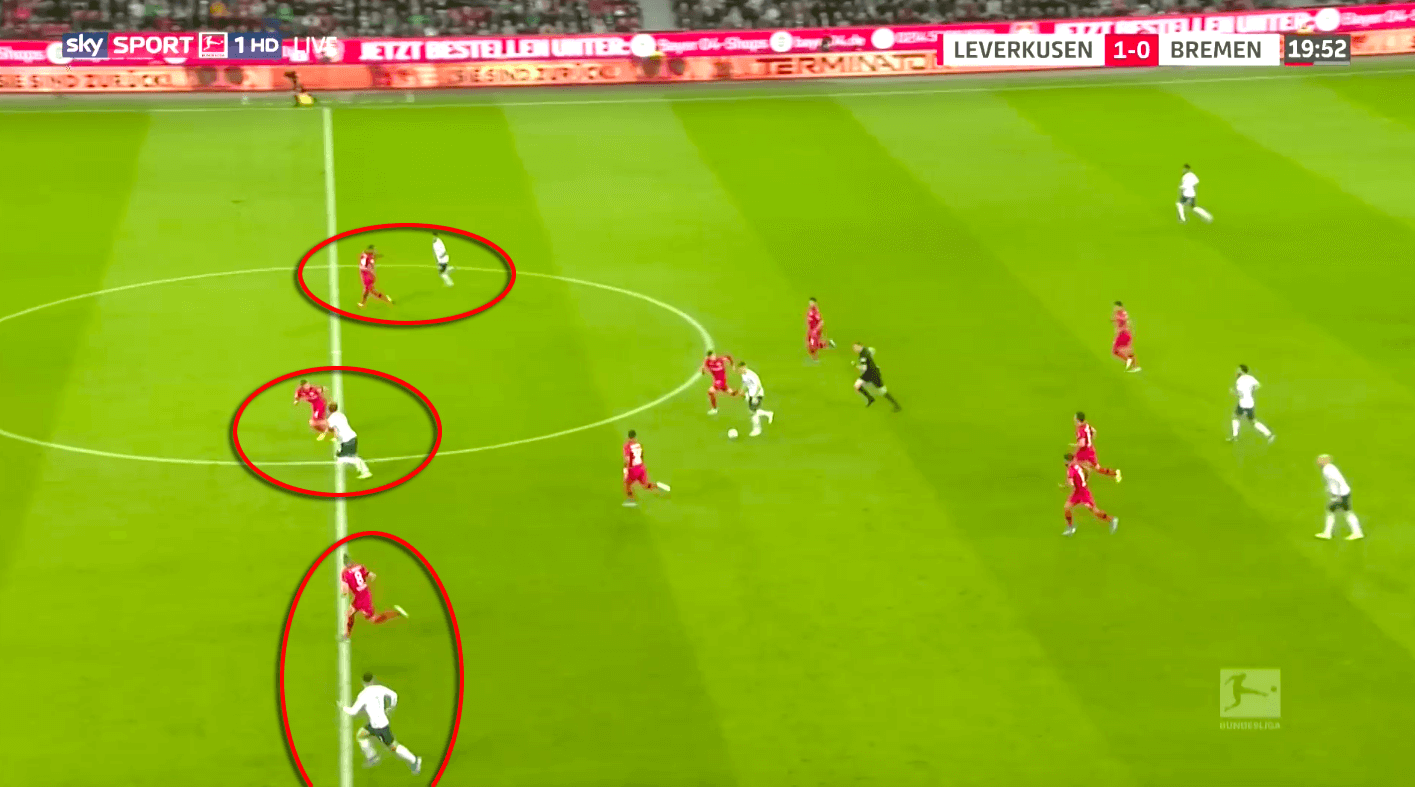
The reason why Bremen did not create more goal-scoring opportunities on the break was that at least one of Leverkusen’s double pivot could stay close enough to their backline to press the ball-carrier. In these cases, Werder sometimes missed short passing options with all of their attackers starting deep runs. Since that was too predictable at times, Leverkusen’s defenders could drop early enough to avoid being overplayed.
Werder’s first goal of the day resulted from a positional attack though. After playing out from a goal-kick against Leverkusen’s press, Bremen could quickly progress up the right flank. Once Leverkusen’s press is outplayed and Leverkusen defend on the wing, they are often vulnerable in the centre of the pitch as well as in the ball far half-space.
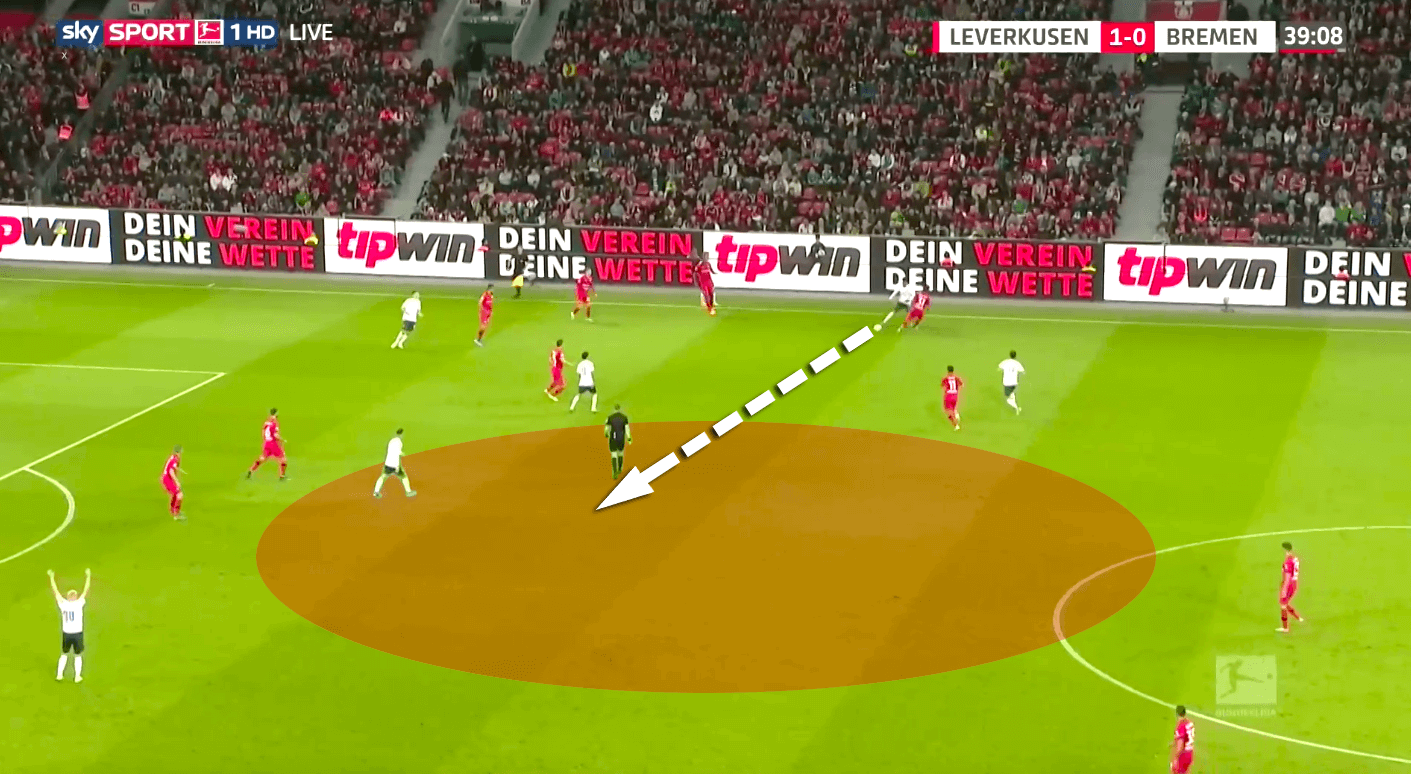
Werder exploited this with a bit of luck as a deflected pass landed into Rashica’s feet in a central position who scored the 1-1 equaliser.
Leverkusen’s lack of cover in the centre was penalised another time in the second half though. When their defensive department shifted towards the wing as Bremen had a throw-in, Werder midfielder Klaassen was left completely free at the edge of the box.
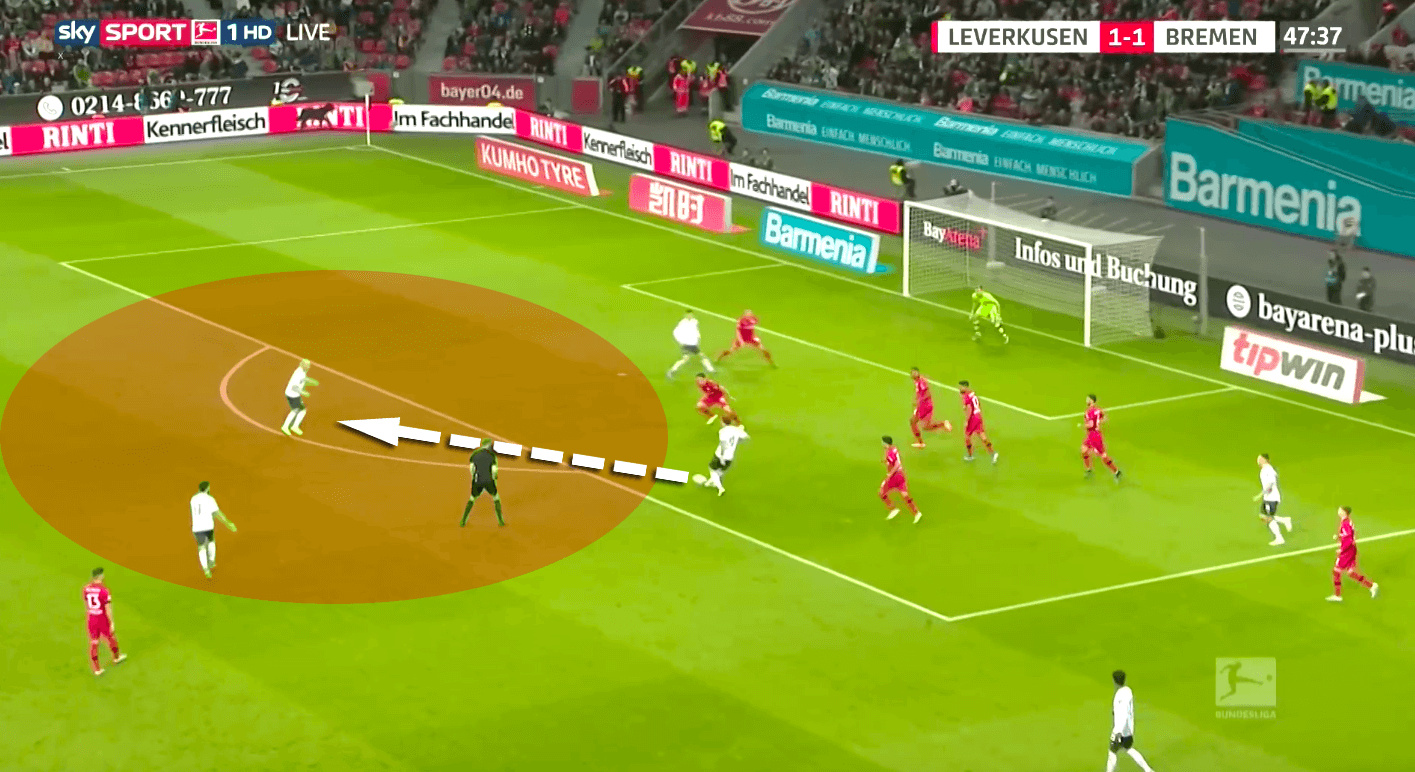
Conclusion
All in all, the match between Bayer Leverkusen and Werder Bremen was an entertaining game for all spectators. Since both sides had clear intentions of how to threaten the opposition goal, the game did not lack of scoring opportunities.
Bayer Leverkusen’s vulnerability during defensive transition did not come into effect as much as expected. However, they showed issues to cover ball far spaces as explained in our analysis and therewith allowed Bremen two goals. Peter Bosz will need to fix this problem to ensure his side to qualify for international competition in this Bundesliga campaign.
Werder Bremen, on the other hand, struggled to defend against Leverkusen’s attacking threat in wide areas. Especially on their left defensive side, they failed to stop Leverkusen wing-back Bellarabi who could put in plenty of crosses. Moreover, Werder coach Kohfeldt will need to address Bremen’s issues to defend crosses in the near future. Otherwise, their plans to challenge for international competition might be in danger this season.

If you love tactical analysis, then you’ll love the digital magazines from totalfootballanalysis.com – a guaranteed 100+ pages of pure tactical analysis covering topics from the Premier League, Serie A, La Liga, Bundesliga and many, many more. Buy your copy of the October issue for just ₤4.99 here





Comments